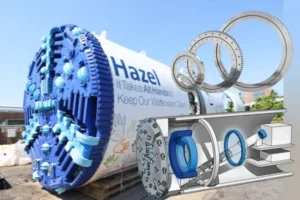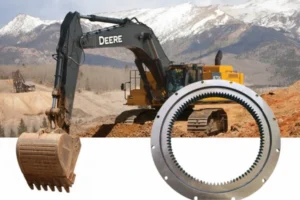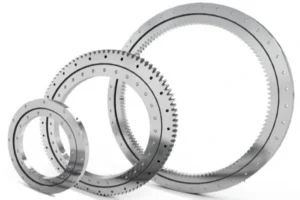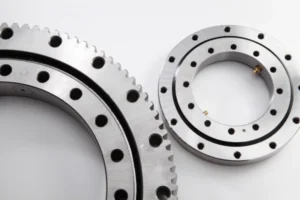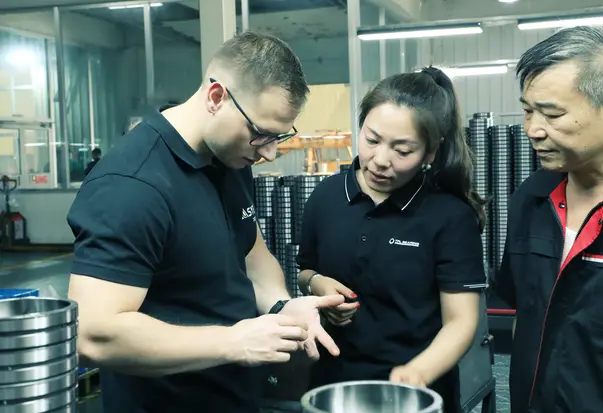Slewing bearings can have seven main problems. These are lubrication failure, contamination damage, overloading, misalignment, fatigue failure, corrosion and pitting, and seal failure modes. If you find these problems early, you can stop them from getting worse. When you see warning signs, you can fix things quickly. This helps you avoid more damage to your bearings. Acting fast keeps your machines working. It also saves you money. Look for symptoms and causes that come with each kind of damage.
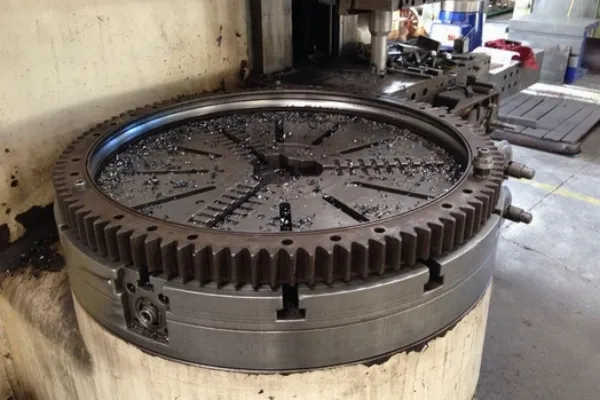
Key Takeaways
- Look at slewing bearings often for things like noise or heat. Check for vibration or leaks to find problems early.
- Make sure bearings stay clean and have enough grease. Use the correct grease and follow the maintenance plan.
- Watch out for damage from dirt or too much weight. Look for problems from misalignment, rust, tired parts, and worn seals. This helps stop failures.
- Fix problems fast when you see warning signs. These signs include rough movement, strange sounds, or cracks you can see.
- Install bearings the right way and check seals often. This helps protect bearings and makes machines last longer.
Lubrication Failure in Slewing Bearings
Description
Lubrication failure is one of the most common problems you will face with slewing bearings. When you do not have enough lubrication or the grease breaks down, the metal parts inside the bearing rub against each other. This causes more friction and heat. Over time, you will see damage like scoring, pitting, and even cracks. If you ignore these signs, you risk early bearing failure. Good lubrication forms a thin film between moving parts. This film protects the surfaces and keeps the bearing running smoothly.
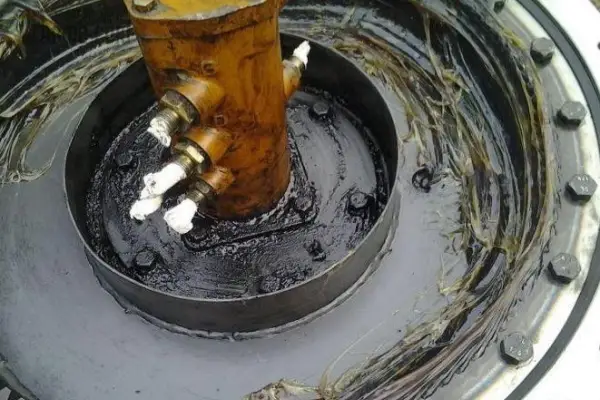
Causes
You can trace most lubrication problems to a few main causes:
- You may use the wrong type of grease or oil.
- You might not add enough lubrication during maintenance.
- Old grease can break down and lose its ability to protect.
- Water or dirt can get into the bearing and ruin the lubrication.
- High temperatures can cause the grease to dry out or leak away.
Tip: Always follow the manufacturer’s guidelines for lubrication intervals and types.
Warning Signs
You can spot lubrication-related damage if you know what to look for. Here are some warning signs:
You hear grinding or squealing noises from the bearing.
You see metal flakes or dark grease leaking out.
The bearing feels hot to the touch.
You notice uneven movement or vibration during operation.
You find visible scoring or wear marks on the raceway.
| Symptom | What It Means |
|---|---|
| Noise | Lack of lubrication or wear |
| Hot surface | Friction and possible damage |
| Metal particles | Internal scoring or wear |
If you see any of these signs, stop the machine and check the lubrication right away. Early action can prevent bigger problems and save you from costly repairs.
Contamination Damage
Description
Contamination damage happens when things like dirt or dust get inside slewing bearings. Sometimes, small metal pieces can get in too. These particles scratch the surfaces inside the bearing. This makes the bearing move roughly. Over time, this can hurt the bearing. If you do not fix contamination, your equipment can break early. Clean bearings last longer and work better.
Causes
There are a few ways contamination can happen:
- Bad seals let dirt or dust get inside the bearing.
- If you do not clean often, dirt can build up and get in.
- Using dirty tools or parts during repairs can cause problems.
- Water can bring in dirt or other bad stuff.
Tip: Always look at the seals for cracks or damage. Clean around the bearing before you start any work.
Warning Signs
You can find contamination damage if you know what to check. Here are some signs:
- Grease that leaks out looks dirty or feels gritty.
- You hear grinding or clicking sounds when the machine runs.
- The bearing does not spin smoothly or shakes.
- You see scratches or small holes on the raceway.
| Warning Sign | What It Means |
|---|---|
| Dirty grease | Dirt is inside the bearing |
| Grinding noise | Surfaces are worn or dirty |
| Vibration | There is damage inside |
| Scratches/pitting | The bearing is badly damaged |
If you see these signs, stop the machine and check the bearing. Clean the area and change the seals if needed. Cleaning and checking seals often helps keep slewing bearings working well.
Overloading Failure Modes
Description
Overloading means you put too much weight or force on slewing bearings. This can happen during normal work or from a sudden shock. When you overload a bearing, it goes past its safe limit. The extra force bends the metal inside. You might see small dents called dimples on the raceway. These dimples get worse over time and cause more damage. If you keep using the machine with too much load, you could break the teeth. The bearing might even fail completely. Overloading often causes pitting, which means tiny holes show up on the surface. These problems make the bearing weaker and less safe.
Causes
There are several ways to overload a bearing:
- Lifting things that are too heavy for your equipment
Sudden starts or stops that create shock loads
Uneven weight, where one side has more load
Not following the manufacturer’s load ratings
Tip: Always check the load limits before using your machine. Spread the weight evenly so you do not stress one part of the bearing too much.
Warning Signs
You can find overloading if you know what to look for. Watch for these signs:
- You hear clicking or grinding when the bearing turns.
- The bearing feels harder to turn, showing more torque.
- You notice looseness in the bearing as it rocks under load.
- The machine shakes more than normal.
- You see dimples or pitting on the raceway.
| Warning Sign | What It Means |
|---|---|
| Clicking/grinding | Damage inside from too much load |
| Hard to rotate | More torque, possible damage |
| Play or looseness | Damage to the structure |
| Dimples/pitting | Early sign of bearing failure |
If you see any of these signs, stop the machine and check the bearing. Acting fast can stop bigger problems and save money.
Misalignment in Bearings
Description
Misalignment happens when you do not install the bearing correctly. If the bearing does not sit straight, the rollers inside can tilt. This causes uneven wear and poor rotation. You may notice that the bearing does not turn smoothly. Misalignment often comes from improper mounting or mounting flaws. When the bearing is not aligned, it cannot carry loads as designed. This problem can lead to early failure and costly repairs.
Causes
You can find several reasons for misalignment:
- You use improper mounting during installation.
- The surface under the bearing is not flat or strong enough.
- You do not follow the correct mounting steps.
- Dirt or debris stays under the bearing during mounting.
- You rush the installation and skip alignment checks.
Tip: Always check the mounting surface before you install the bearing. Use the right tools and follow each step in the instructions.
Warning Signs
You can spot misalignment if you look for these signs:
- The bearing makes uneven or jerky movements.
- You hear strange noises when the bearing turns.
- The bearing shows uneven wear on the raceway.
- You see gaps or spaces between the bearing and the mounting surface.
- The machine vibrates more than usual.
| Warning Sign | What It Means |
|---|---|
| Jerky movement | Misalignment or roller tilt |
| Uneven wear | Mounting flaws |
| Gaps at mounting | Poor installation |
| Vibration | Bearing not sitting straight |
If you notice any of these signs, stop and check the alignment. Fixing misalignment early helps you avoid bigger problems and keeps your equipment safe.
Fatigue Failure
Description
Fatigue failure happens when you use a slewing bearing for a long time with repeated loads. Each time the bearing moves, the metal inside faces stress. Over many cycles, small cracks can start to form. These cracks grow bigger with each movement. After enough cycles, the bearing can break apart. You might see flaking or pieces coming off the raceway. This type of bearing failure is common in machines that work every day. Under normal conditions, slewing bearings can last for hundreds of millions of cycles before fatigue sets in. Some tests show that bearings can go past 120 million oscillations without trouble. Most bearings reach about 200 million cycles before you see a 50% chance of failure. The actual life depends on how you use the machine and how heavy the loads are.
Causes
You can find several reasons for fatigue in slewing bearings:
- Heavy or repeated loads that stress the metal
- Poor lubrication, which increases friction and wear
- Misalignment, which puts extra force on one side
- Using the bearing past its rated load or speed
Note: If you keep using a bearing with small cracks, the damage will spread faster. Always check for early signs of fatigue.
Warning Signs
You can spot fatigue failure if you know what to look for. Watch for these warning signs:
- You hear unusual noises, like clicking or rumbling, during operation.
- The machine vibrates more than normal.
- You see flaking or small pieces breaking off the raceway.
- The bearing feels rough when you turn it by hand.
- You notice visible cracks on the surface.
| Warning Sign | What It Means |
|---|---|
| Unusual noise | Early fatigue or cracks |
| Vibration | Internal damage growing |
| Flaking | Surface breaking apart |
| Visible cracks | Advanced fatigue failure |
If you notice any of these signs, stop the machine and inspect the bearing. Early action can help you avoid bigger problems and keep your equipment safe.
Corrosion and Pitting
Description
Corrosion and pitting can hurt slewing bearings a lot. Corrosion happens when metal touches chemicals or water. Pitting means tiny holes or dents form on the raceway. These problems make the bearing weak and not work well. If you do not fix corrosion, the bearing can break much faster. Pitting starts when the raceway is soft or not made well. You may feel sliding friction and stress from contact. These things cause even more damage.
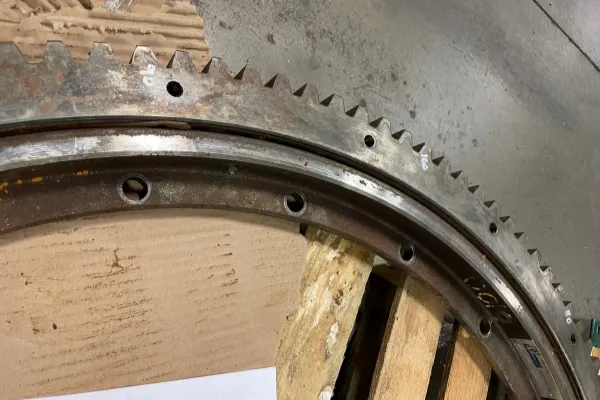
Causes
There are many reasons for corrosion and pitting in slewing bearings:
- Chemicals in the air react with the metal.
- Water from the air can collect on the surface.
- Sparks from electricity can damage the beari
ng.
- Tiny shaking can wear down the metal.
- Bad lubrication leaves metal open to water or chemicals.
Tip: Keep the bearing clean and dry to stop corrosion and pitting. Use the right lubrication and check the area around your machine.
Common environmental conditions that lead to corrosion and pitting:
- Water or chemicals get into the bearing.
- Moisture from the air collects on the metal.
- Sparks from electricity touch the bearing.
- Tiny shaking wears out the surface.
Warning Signs
You can find corrosion and pitting early if you know what to check. Look for these signs:
- Rust or strange color on the bearing.
- Small holes or dents on the raceway.
- The bearing feels rough or gritty when you turn it.
- The machine shakes or makes more noise.
- Grease looks milky or dirty.
| Warning Sign | What It Means |
|---|---|
| Rust/discoloration | Damage from chemicals or water |
| Pitting/craters | Surface damage from corrosion |
| Milky grease | Water got into the grease |
If you see these signs, act fast. Clean the bearing, add good lubrication, and fix the area to stop more damage.
Seal Failure Modes
Description
Seal failure is a serious problem for slewing bearings. When seals wear out or get damaged, they cannot keep out dirt or water. Contaminants enter the bearing and cause rapid wear. You may see lubricant leaking from the bearing. This means the seal cannot hold the grease inside. If you ignore seal problems, you risk bearing damage and expensive repairs. Seals protect the inside of the bearing from outside elements. Good seals help your equipment last longer.
Causes
You can find several reasons why seals fail in slewing bearings:
- Material fatigue causes cracks in the seal.
- Improper installation leads to seal misalignment.
- Overloading puts extra stress on the seal and causes damage.
- Missing seal parts leave gaps for contaminants to enter.
- Normal wear and tear breaks down the seal over time.
Tip: Inspect seals often. Replace any seal that shows signs of wear or damage.
Warning Signs
You can spot seal failure if you know what to check. Look for these warning signs:
- Oil or grease leaks around the bearing.
- Visible cracks or tears in the seal material.
- Dirt or water found inside the bearing.
- Increased noise or vibration during operation.
- The bearing feels rough when you turn it.
| Warning Sign | What It Means |
|---|---|
| Oil/grease leakage | Seal cannot hold lubricant |
| Cracks/tears | Seal material is damaged |
| Dirt inside bearing | Contaminants entered through the seal |
| Vibration/noise | Possible bearing damage |
If you see any of these signs, stop your machine and check the seals. Replace damaged seals right away. Regular inspection and replacement help prevent further damage and keep your equipment running smoothly.
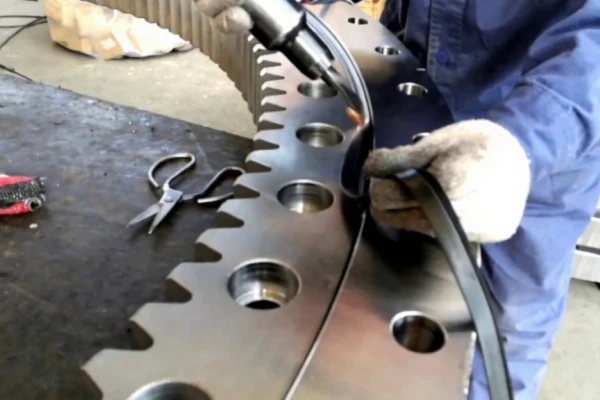
You can keep your machines safe if you check slewing bearings often and act fast when you see warning signs. Finding problems early, like too much heat or seal wear, helps you stop big repairs and save money. Checking your bearings often lets you find damage before it gets worse. Try these steps to protect your bearings:
- Listen for strange sounds, shaking, or heat.
- Look at seals and raceways for any damage.
- Clean and add grease to bearings to stop too much heat.
- Use a checklist to help with common problems.
A recent offshore wind project showed that TFL’s expert help and special solutions stopped all seal failures and abnormal wear for two years, even in tough weather. You can contact us for expert advice and help with slewing bearing problems.
FAQ
What is the best way to extend the life of a slewing bearing?
You should keep the bearing clean and well-lubricated. Check for damage often. Replace seals when you see wear. Follow the load limits set by TFL. Regular care helps your bearing last longer.
How often should you inspect slewing bearings?
You should inspect slewing bearings every month. Look for leaks, noise, or vibration. If your machine works in harsh conditions, check more often. Early checks help you find problems before they get worse.
Can you repair a damaged slewing bearing, or should you replace it?
You can repair minor damage, like changing seals or adding grease. If you see cracks, deep pitting, or broken parts, you should replace the bearing. Using a badly damaged bearing can cause machine failure.
What happens if you ignore early warning signs?
Ignoring warning signs can lead to bigger problems. The bearing may fail suddenly. This can stop your machine and cost you more money. Always act fast when you see signs of trouble.
Why does proper alignment matter for slewing bearings?
Proper alignment lets the bearing carry loads evenly. Misalignment causes uneven wear and early failure. You should always check alignment during installation and after repairs.
